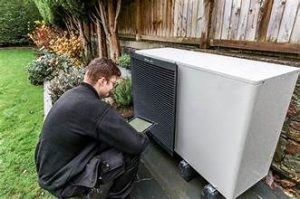If your heat pump is struggling to keep your home comfortable, making strange noises, or driving up your energy bills, it might be time for a replacement. A new heat pump can make a big difference in your home’s efficiency and comfort—especially in our climate, where winters can be harsh and summers can be humid.
Replacing a heat pump might seem overwhelming, but the process is straightforward when you know what to expect. Here’s a step-by-step guide to help you navigate your heat pump replacement in Mississauga, ON with confidence.
1. Know When It’s Time to Replace
Heat pumps typically last 10-15 years, depending on how well they’re maintained. If your system is older and frequently needs repairs, replacing it may be more cost-effective than continuing to fix it. Other signs that indicate it’s time for a new heat pump include:
- Uneven heating or cooling
- Higher-than-usual energy bills
- Strange noises or odors coming from the unit
- Weak airflow
If you’re unsure whether you need a replacement, a professional HVAC technician can inspect your system and give you an honest recommendation.
2. Choose the Right Heat Pump
Not all heat pumps are the same. When selecting a replacement, consider:
- Size: A unit that’s too small won’t heat or cool your home efficiently, while one that’s too large will cycle on and off too frequently, leading to wear and tear.
- Efficiency Rating: Look for a heat pump with a high SEER2 (Seasonal Energy Efficiency Ratio 2) and HSPF2 (Heating Seasonal Performance Facto 2r) rating to save on energy costs.
- Type: Do you want a traditional air-source heat pump, or would a ductless mini-split be a better fit for your home? Your HVAC technician can help you choose the best option.
3. Schedule Your Installation
Once you’ve selected your new heat pump, it’s time to schedule the installation. A professional HVAC team will:
- Remove your old unit and safely dispose of it.
- Inspect your ductwork and electrical connections to ensure compatibility.
- Install the new heat pump and connect all necessary components.
- Test the system to make sure it’s working properly.
A typical heat pump replacement takes about a day, but it can take longer if additional work is needed, such as updating ductwork or electrical wiring.
4. Understand Maintenance Needs
To keep your new heat pump running efficiently for years to come, regular maintenance is key. This includes:
- Changing or cleaning the air filter every 1-3 months
- Scheduling professional tune-ups twice a year
- Keeping outdoor coils free of dirt and debris
- Checking for any unusual noises or performance issues
Proper maintenance will not only extend the life of your heat pump but also keep your energy bills low and ensure consistent comfort.
A heat pump replacement is a great investment in your home’s comfort and efficiency. By understanding the process and working with a trusted HVAC professional, you can ensure a smooth installation and enjoy the benefits of a reliable heating and cooling system.
Contact Peatson’s Heating and Air Conditioning Ltd. for your heat pump needs. We will be happy to help you.

